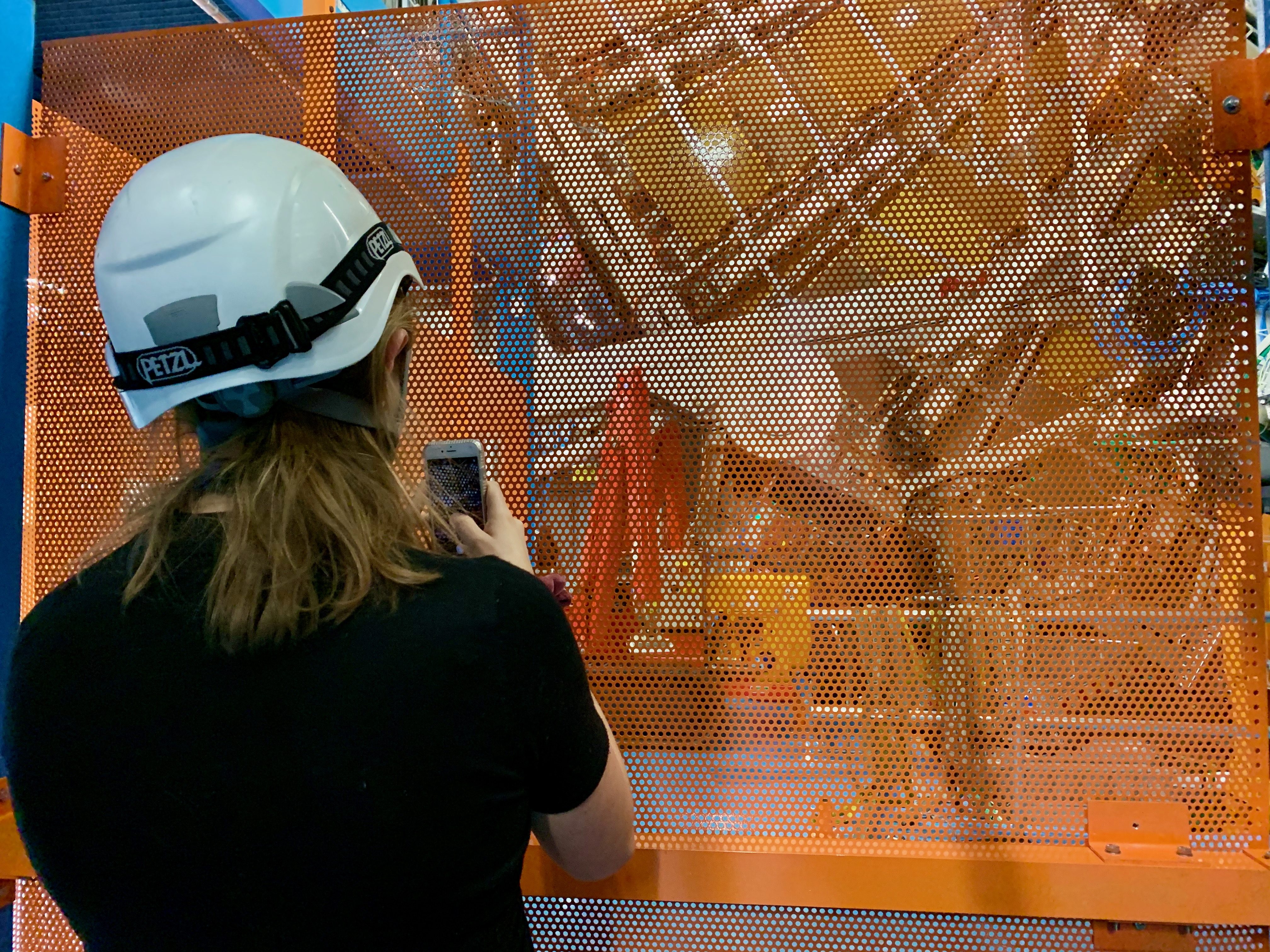What does 8 TeV mean?
11 April 2012 | By
Inspired by Regina Caputo’s excellent post on the CERN accelerator complex, I thought I should give you some fun facts about the LHC (in “human units”).

1) In 2012, the LHC is operating at Center of Mass energy of 8 TeV. What does this mean?
The LHC collides two beams of protons, each with energy of 4 TeV. If you were standing at the collision point, you would feel a total energy of 8 TeV, but you would not have moved in any direction. In contrast, if you were to be hit by only beam, you are likely to fall backward. Substitute a moving car for the proton beam, and you will see what I mean! OK, so what does 8 TeV mean?
Please look at Wikipedia for a discussion of units. Briefly, 1 Joule is the energy of a 1 Kilogram mass moving with a speed of 1 meter/second (1 J = 1 Kg * (1 m/s) 2). In particle physics units, it is equal to about 6*1018 electron volts, i.e., 6*106 TeV (1 T(era)eV = 1012 eV).
When operating at design parameters, the LHC will have two beams of protons, where each beam consists of ~2800 individual bunches, and each bunch contains ~1011 protons. Each proton will have energy of 8 TeV, so the energy of each bunch of protons is ~ 8*1011 TeV, i.e., 133,000 Joules (or 133 kilo Joules).
A bullet fired from a rifle typically weighs 4 grams, and is travelling at about 1000 m/s when it leaves the barrel. This corresponds to a kinetic energy of about 2000 Joules, or 2 kilo Joules, i.e., roughly 1/66 the energy of one bunch of protons. Anti-tank shells (used in WW II) had energies anywhere from 150-800 kilo Joules.
So it is crucial that the beam does not hit something that it is not intended to hit! (BTW, I have not included the energy stored in the magnets, which is a whole different story, and is many times larger).
2) How cold is the LHC?
The magnets in the LHC are superconducting, i.e., they have almost negligible electrical resistance. For this to occur, they have to be cooled to about 2 deg K(elvin), i.e., -271 deg. Celsius, or -455 deg. Fahrenheit.
By studying the Cosmic Microwave Background, which is a form of electromagnetic radiation filling the universe, astronomers have deduced that the current temperature of the universe is about 2.7 deg K.
Some experiments in solid state physics laboratories operate much closer to absolute zero, e.g., at 10-6 Kelvin, so we cannot claim that the LHC is the coldest place in the universe, but it certainly is one of the coolest (in more ways than one!).
3) How about those magnets?
To keep the proton beam circulating at 7 TeV, we need very strong magnetic fields to essentially keep the beams in the circular ring. For this purpose, the LHC has 1232 dipole magnets. Each of these magnets is 14 m long, weighs about 35 tons, and the required magnetic field is generated by passing about 11700 Amps of current through 5 Km of superconducting wire.
Then there are about 7066 magnets that focus the beam, and otherwise correct the path of the proton beam. For instance, if nothing was done, a proton will “fall” down due to gravity after traveling a mere 850 times around the ring (in one second, a proton goes around the ring about 11000 times).
To learn more about the LHC, please take a look here and at the links therein.




